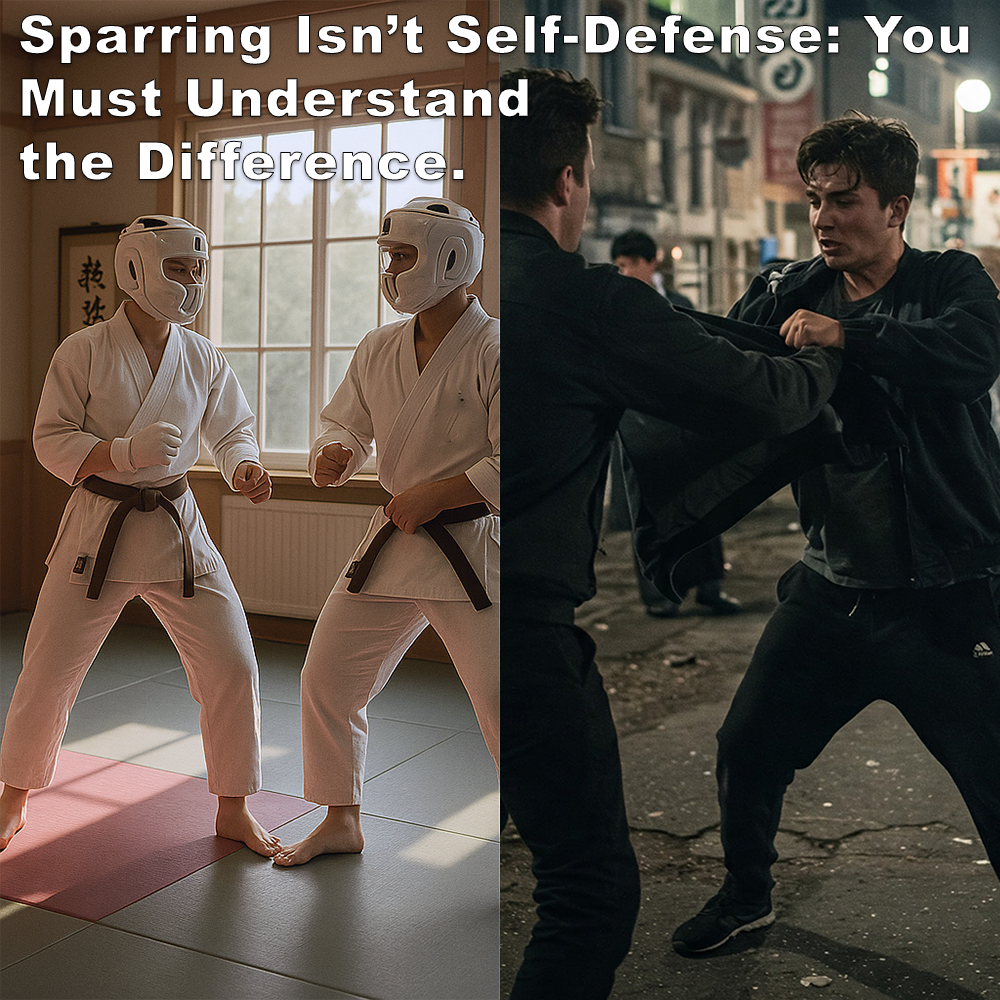
(Approx 2 minute 40 second read)
I often receive messages from people that say that in their dojo, or school, their instructor doesn’t teach bunkai applications – or are not very realistic.
.
This isn’t unusual. Many instructors were brought up on the idea that you shouldn’t question. You just did as you were told. Why? Well, perhaps they didn’t know either.
.
Not the best learning environment, is it?
.
But to be honest, once you reach a certain level, if you don’t question yourself and seek to find answers on your own, whose fault is it?
.
If your instructor doesn’t know, then search for someone who does. There is so much information available today. If you have the desire, it’s all there.
.
But you have to want it of course. It’s not brain surgery. If something doesn’t work when trying to apply it, look for another way.
.
I had another message recently from a sport-karate practitioner. The message again disputed my take on the usefulness of kata and its role in self-defense, asking: “What is sparring for?” The tirade went on, but I won’t give it too much credence – it was, shall we say, particularly rude. Anyway. God bless them.
.
Surely they must realize that the sparring mentioned is just that – sparring. It’s not real.
.
For me, I would describe sparring as practicing your techniques freely against an opponent who will resist your efforts and also apply their own. The restrictions are based on safety, not on realism. And for most practitioners, you stay standing.
.
Two opponents using and defending techniques for, say, 3-minutes. Contact is typically light unless told otherwise. There’s no winner and it should be about helping each other learn and practice.
.
Of course, the exact approach varies by school. Some prohibit certain techniques, others mandate specific ones. Some like to hack at the legs and pound the body, while others allow light contact to the head, while others don’t. The session usually begins at a distance, and many dangerous techniques are disallowed – and most dojo will expect you to stay standing.
.
Does that sound like any form of self-protection to you?
.
Self-protection requires a different mindset – a different set of skills. The right training for the right purpose, in the right context – that’s what truly matters.
.
Sparring is useful, it’s fun, it builds skill, and it has an important place in training. But – and this matters – everything we do needs to be in the right context. If you’re using sparring as your only method to prepare for self-defense, then you’re placing it in the wrong context.
.
For those who are still unconvinced, think of it like this – in a self-defense scenario, people don’t square off. You’re not going to face off against a criminal the way you would an opponent in the dojo or in competition. Real-world situations rarely play out that cleanly.
.
If your goal is to compete, then find a dojo that excels in that. There are plenty of great schools that will help you.
.
But if your interest is self-protection, then you need to find a school that truly covers that type of training – not one where you stand toe-to-toe pretending that sparring is the answer to the knife-wielding thug hiding in the alleyway.
.
So back to the criticism of kata, which is abundant. When its function is properly understood, it offers insight – a glimpse into how the old pioneers, over a century ago, used their skills for real-world self-protection.
.
These weren’t techniques made for points or to impress judges. They were forged out of necessity, built on experience, and passed on in the only way they could at the time – through kata. It was, in a sense, their way of preserving knowledge for future generations.
.
The answers are there – if you’re willing to look beyond the noise and apply a little common sense.
.
.
Written by Adam Carter
